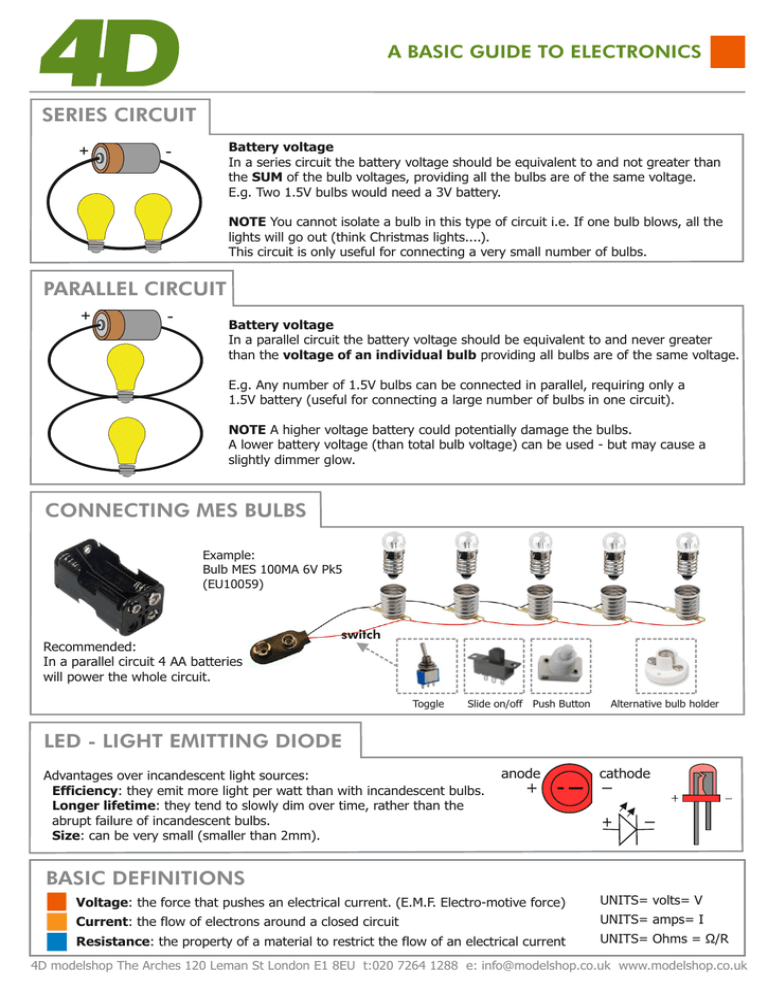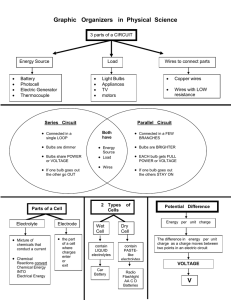BASIC DEFINITIONS SERIES CIRCUIT PARALLEL CIRCUIT
advertisement

A BASIC GUIDE TO ELECTRONICS SERIES CIRCUIT + Battery voltage In a series circuit the battery voltage should be equivalent to and not greater than the SUM of the bulb voltages, providing all the bulbs are of the same voltage. E.g. Two 1.5V bulbs would need a 3V battery. - NOTE You cannot isolate a bulb in this type of circuit i.e. If one bulb blows, all the lights will go out (think Christmas lights....). This circuit is only useful for connecting a very small number of bulbs. PARALLEL CIRCUIT + - Battery voltage In a parallel circuit the battery voltage should be equivalent to and never greater than the voltage of an individual bulb providing all bulbs are of the same voltage. E.g. Any number of 1.5V bulbs can be connected in parallel, requiring only a 1.5V battery (useful for connecting a large number of bulbs in one circuit). NOTE A higher voltage battery could potentially damage the bulbs. A lower battery voltage (than total bulb voltage) can be used - but may cause a slightly dimmer glow. CONNECTING MES BULBS Example: Bulb MES 100MA 6V Pk5 (EU10059) switch Recommended: In a parallel circuit 4 AA batteries will power the whole circuit. Toggle Slide on/off Push Button Alternative bulb holder LED - LIGHT EMITTING DIODE Advantages over incandescent light sources: Efficiency: they emit more light per watt than with incandescent bulbs. Longer lifetime: they tend to slowly dim over time, rather than the abrupt failure of incandescent bulbs. Size: can be very small (smaller than 2mm). anode cathode BASIC DEFINITIONS Voltage: the force that pushes an electrical current. (E.M.F. Electro-motive force) UNITS= volts= V Current: the flow of electrons around a closed circuit UNITS= amps= I Resistance: the property of a material to restrict the flow of an electrical current UNITS= Ohms = Ω/R 4D modelshop The Arches 120 Leman St London E1 8EU t:020 7264 1288 e: info@modelshop.co.uk www.modelshop.co.uk


